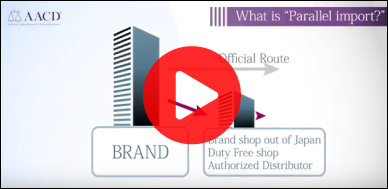AACD Criteria
AACD independently establishes “AACD Criteria” that defines standards for the handling of brand products by member companies, and refers to goods that member companies should not handle as “nonconforming goods.” Although the criteria themselves do not have legal binding power, member companies voluntarily pledge compliance with the standards set forth in the criteria.
What is the difference between “AACD complying goods” and “genuine goods”?
AACD believes that a product can be legally judged as genuine, only by the brand holder, or trademark owner. Therefore, AACD does not judge whether products are genuine or fraudulent.
What are AACD Criteria based on?
In creating AACD Criteria, AACD acquires products that are considered “genuine goods” from retail stores inside and outside of Japan that are directly managed by brands, and analyzes their features by brand and by item. Close-up detailed pictures of goods AACD has collected since its establishment in 1989 have been compiled in a database for easy reference.
In addition to image and specification data, AACD also collects scientific data, such as by measuring products using a 3D digital microscope and conducting component analyses using fluorescent X-ray.
AACD’s professional staff use the various data to extensively analyze and examine relevant goods, and judge whether or not they conform to AACD Criteria.
Needless to say, the efforts of AACD staff alone are not enough to check all goods that are daily distributed by AACD member companies. Therefore, to even more effectively eliminate fraudulent goods from the market, AACD has established a system of “certified AACD criteria examiners.” Persons who attend the roughly 18 hours or so of required lectures and pass an eligibility test may become AACD criteria examiners. These examiners attend regular training sessions hosted by AACD, to brush up on their knowledge and expertise, and may renew their certification every 5 years, with the approval of a review panel.
